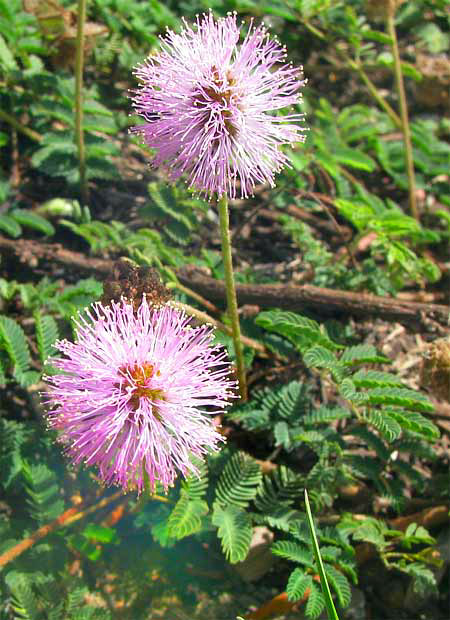Excerpts from Jim Conrad's
Naturalist Newsletter

from the August 11, 2008 Newsletter, written on the road in south Texas:
SENSITIVE BRIAR IN GEORGE WEST
In south Texas the bus driver called a rest stop in the town of George West, south of San Antonio. Grass surrounding the fast-food-place parking lot was as thickly ornamented with pink globes of Sensitive Briar flower heads as a northern lawn in spring might be thick with Dandelions. You can see a couple of heads above.
Several species of Sensitive Briar exist. They're all in the genus MIMOSA. Texas seems to be home to about 17 Mimosa species and I'm not sure which one this is.
In the picture you see two globular flower heads, each composed of dozens of flowers, each flower with 4-10 stamens extending far beyond the tiny, five-lobed corollas. The flower clusters' pinkness is provided by the stamens' slender filaments. You can see that each filament is topped by a tiny, roundish anther, a pocket-like thing that slits open and releases pollen.
What's "sensitive" about the Sensitive Briar is that its leaves are touch sensitive. When I poked one with my toe, in less than a second the whole doubly- compound leaf collapsed at the petiole connection point with the stem, and the leaflets folded up.
Two dandy technical words describing touch-induced movement, by the way, are thigmonasty and seismonasty.
Some think that plant sensitivity to touch may help protect the plant from herbivores who see the collapsed leaves, think the plant may be sick, and avoid it.